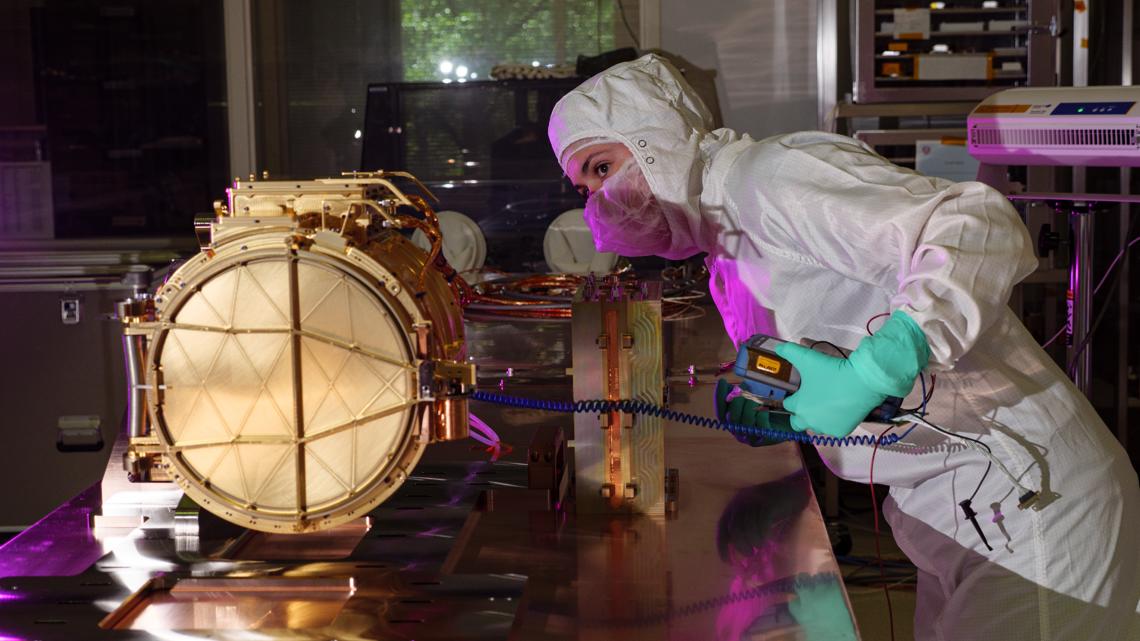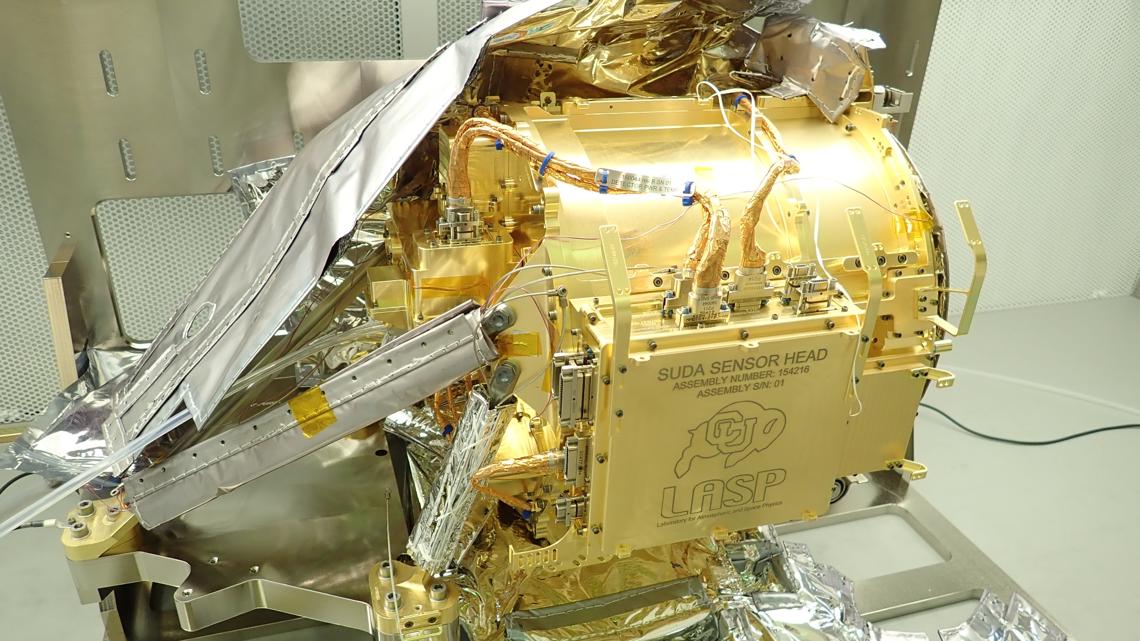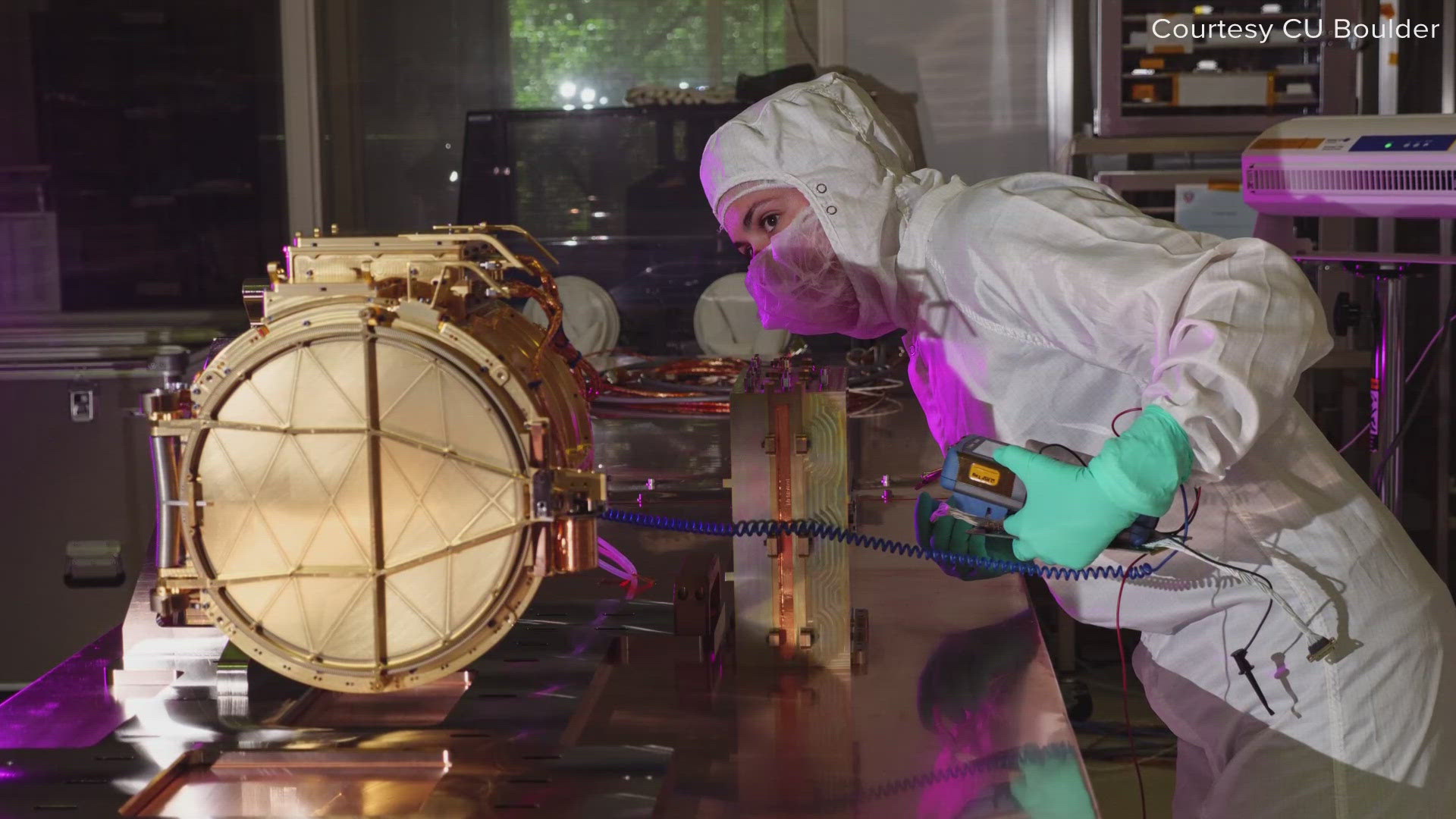BOULDER, Colo. — Can one of Jupiter's moons support life? That's the question scientists and engineers at CU Boulder hope to solve.
Next Thursday, the launch window opens for NASA's flagship Europa Clipper mission.
Nine scientific instruments will be onboard the spacecraft that will help researchers determine whether Europa, one Jupiter's moons, has habitable conditions. One of those instruments, the Surface Dust Analyzer (SUDA), was developed and built at the Laboratory for Atmospheric and Space Physics (LASP) on CU Boulder's campus.
Scientists are especially interested in Europa because they believe there's a vast ocean beneath its icy surface.


"We will basically figure out how deep is the ocean? How thick is the ice crust? What stuff is really in the ocean? How much energy is fed into the ocean? This will allow us to address very fundamental questions for humanity," said Dr. Sascha Kempf, SUDA principal investigator and physics department professor at CU Boulder.
SUDA is a roughly $50 million space instrument designed to collect particles ejected from the surface of Europa by tiny meteorite impacts. Without ever landing on the surface, SUDA can identify what the particles are made of, including whether they contain organic molecules or salts, as well as where on the surface they came from, according to CU Boulder.
It weighs about 35 pounds and is gold-plated, according to CU Boulder. About 100 people helped develop and build it.


"We are looking at dust, but we are not looking at dust, so it's a funny philosophical concept, right? We are looking at dust, but what we are interested is not dust itself, but it's the information it carries about its source body," said Sean Hsu, SUDA deputy principal investigator and research associate at CU Boulder.
It'll take the Europa Clipper about six years to reach Jupiter, arriving in April 2030. Kempf said the mission will complete dozens of close fly-by's of Europa where data will be collected and sent back to Earth.
SUDA's team will get to test out their instrument about two years from now, after it crosses Mars' orbit for the last time. That's when researchers will open SUDA's door to begin sampling particles of dust in space to make sure it's working as expected, according to CU Boulder.
The target launch date for the Europa Clipper is Oct. 10. It will lift off from NASA's Kennedy Space Center in Florida.

